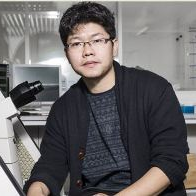Nanotechnology for Energy Materials
A special issue of Energies (ISSN 1996-1073). This special issue belongs to the section "I: Energy Fundamentals and Conversion".
Deadline for manuscript submissions: closed (30 September 2018) | Viewed by 18694
Special Issue Editors
Interests: nanotechnology and nanoscience; physics: applications and technology
Interests: Nanotechnology and Nanoscience; Physics: Applied Surface Science
Special Issue Information
Dear Colleagues,
The global energy crisis has triggered an increasing demand for novel materials that advance the performance of energy-related technologies. The development of nanomaterials and nanotechnologies has provided powerful tools to promote the performance of energy materials and devices, including lithium batteries, supercapacitors, fuel cells, and solar cells by overcoming the limitations through proper material and structure design at the nanoscale. In recent decades, tremendous progress has been made in those energy materials by taking advantage of nanotechnology. The primary objectives of nanotechnology for energy materials are improving energy storage/conversion efficiency and reliability. Nevertheless, there are emerging issues to be addressed for energy materials, structures and complex electrochemistry at such small scale. This Special Issue is dedicated to Nanotechnology for Energy Materials, with the aim of deepening our understanding of electrochemistry at the nanoscale.
This Special Issue is dedicated to topics of interest including, but not limited to, the following:
- green energy, biofuel;
- energy materials synthesis;
- nanobiotechnology for energy;
- nanoengineering, molecular engineering;
- energy storage, hydrogen storage, supercapacitors;
- solar energy conversion;
- electrochemical;
- solid batteries, fuel cells, lithium battery;
- flow battery;
- water splitting;
- catalysis.
Prof. Dr. Mingdong Dong
Prof. Dr. Bo Liu
Prof. Dr. Jing Zhong
Guest Editors
Manuscript Submission Information
Manuscripts should be submitted online at www.mdpi.com by registering and logging in to this website. Once you are registered, click here to go to the submission form. Manuscripts can be submitted until the deadline. All submissions that pass pre-check are peer-reviewed. Accepted papers will be published continuously in the journal (as soon as accepted) and will be listed together on the special issue website. Research articles, review articles as well as short communications are invited. For planned papers, a title and short abstract (about 100 words) can be sent to the Editorial Office for announcement on this website.
Submitted manuscripts should not have been published previously, nor be under consideration for publication elsewhere (except conference proceedings papers). All manuscripts are thoroughly refereed through a single-blind peer-review process. A guide for authors and other relevant information for submission of manuscripts is available on the Instructions for Authors page. Energies is an international peer-reviewed open access semimonthly journal published by MDPI.
Please visit the Instructions for Authors page before submitting a manuscript. The Article Processing Charge (APC) for publication in this open access journal is 2600 CHF (Swiss Francs). Submitted papers should be well formatted and use good English. Authors may use MDPI's English editing service prior to publication or during author revisions.
Keywords
- nanotechnology
- nanomaterials
- solar energy
- fuel cell
- lithium battery
- super capacitor
- energy management
- energy conversion
- power generation






